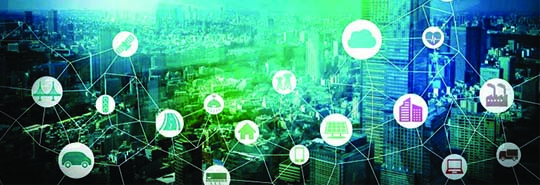Internet of Things (IoT)
The Internet started with a simple idea – connecting computers together to share data in various ways. Since that humble beginning, people have started to connect more devices to the Internet. That’s the basis of the term Internet of Things (IoT). The Internet of Things extends internet connectivity beyond traditional devices like desktop and laptop computers, smartphones and tablets to an ever-growing network of everyday things that utilize embedded technology to communicate and interact with the external environment, all via the Internet. It’s the inter-networking of physical devices (“connected devices” and “smart devices”) that enable these objects to collect and exchange data.
Internet of things devices
The ‘thing’ in Internet of Things (IoT) could be any object that contains the required computing power & connectivity to the Internet and have the ability to collect and transfer data over a network without manual assistance or intervention. The embedded technology in the objects helps them to interact with internal states or the external environment, which in turn affects the decisions taken.
Internet of things applications
The ability to network embedded devices with limited CPU, memory and power resources means that Internet of Things (IoT) finds applications in nearly every field. Few examples,
- Home automation (also known as smart home devices) such as the control and automation of lighting, ventilation, air conditioning (HVAC), robotic vacuums, air purifiers, ovens or refrigerators that use Wi-Fi for remote monitoring.
- Wearable technology which includes smart watches, fitness trackers, VR headsets and more…
- Environment: IoT application technologies that have sensors can be used to monitor air and water quality, soil or atmospheric conditions, and even the movements of wildlife. The IoT devices can also be used in applications such as tsunami early-warning systems to enable authorities to offer more effective responses and aid.
- Utilities doing real time grid assessment from devices sitting on the grid.
- Logistics firms designing real-time visibility into location and condition of assets.


